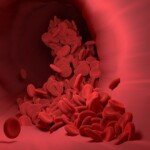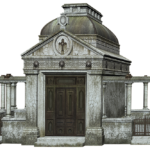The Future of Sustainable Manufacturing: Embracing Circulation Recycling Technology in 3D Printing
The rise of 3D printing has revolutionized prototyping and production, providing unprecedented design freedom and reduced lead times. But as adoption grows, so is the inevitable by-product: waste. Failed prints, supporting structures and end-of-life (especially in metal additive manufacturing) pose significant environmental challenges. Metal powders are expensive, and traditional disposal methods contribute to resource depletion and landfill burden. This is the concept of innovation Circulation Recycler Technology Become the key "Ecologically fixed," Transform waste into closed-loop resources and redefine sustainability in 3D printing.
Beyond Landfills: The Recycling Revolution
The loop recycler system represents paradigm transfer. Instead of treating used metal powder or waste parts as waste, the technology focuses on Reclamation, post-treatment and reuse. Here is how it works:
- Collect and Classify: Carefully collect post-treatment waste, including building indoor unused powders, supporting structures and failed builds (mainly metals). Crucially, material types remain separate to maintain purity and alloy integrity.
- Advanced Screening and Purification: The collected material is rigorously sieved to remove excessive particles or contaminants. Advanced systems can be fused with specialized gas or heat treatments to reduce oxidation particles or remove organic residues, thus ensuring the chemical stability of the powder.
- Particle Engineering and Rejuvenation: This is the core of the loop recycler. Techniques such as plasma spheroidization or specialized mechanical processes may reshape irregular or partially sintered particles back into highly spherical, flowable powder. The goal is to restore the characteristics of the powder (particle size distribution, fluidity and density) as much as possible with Virgin material specifications.
- Quality control and integration: The revived powder is rigorously tested for materials (chemistry, flow rate, obvious density). Depending on the results and application requirements, it is usually mixed with Virgin powder to ensure consistent, repeatable printing performance without compromising the properties of the part.
- Closed-loop reuse: this "Circular" As the reprocessed powder was safely reintroduced into the metal 3D printing workflow, it was closed, ready to create new high-quality components.
Why is a loop recycler not only recycle: "Ecological fixed" Influence
The benefits of implementing recycling recycler technology go far beyond simple waste reduction:
- Rapidly reduce costs: Metal powder (titanium, nickel alloy, tool steel) is the main cost. Loop recyclers can significantly reduce material costs by minimizing the need for Virgin powder – sometimes depending on the process and material.
- Environmental Management: It greatly reduces landfills, reduces the carbon footprint associated with mining and refined ore, and minimizes the overall environmental impact of additive manufacturing. It embodies the real resource cycle.
- Enhance resource security: It reduces dependence on the volatile raw materials market and supply chains, making manufacturing more resilient.
- Data-driven sustainability indicators: Implementing a recycling recycler allows companies to quantify and report reduced substance efficiency and waste reduction, enhancing their ESG (Environmental, Social and Governance) certificates.
Greglime: Creating sustainable metal 3D printing with resource intelligent printing
On Greatlight, sustainability is not an afterthought. It is built into our manufacturing spirit. We recognize that the pioneering power of metal 3D printing is responsible for resource management. Although details of our proprietary process remain confidential, our commitment to the recycle recycler principle "Ecological fixed" It’s basic:
- Integrated Waste Management: From the build room to the finished part inspection, we have systems that meticulously collect and isolate all metal powder waste streams.
- Investment in advanced post-processing: We utilize cutting-edge equipment and protocols to clean, rejuvenate and qualified recycled powders. Our focus is on maximizing availability while ensuring that the final blended powder meets the stringent requirements of aerospace, medical and industrial components.
- Material expertise and quality focus: Our deep expertise in the properties and behavior of metal powders allows us to intelligently blend recycled powders and maintain extraordinary powders Accuracy, strength and surface quality This defines the Greatlight section. Strict material testing is not negotiable.
- One-stop sustainability and quality: Sustainability is not alone. Our comprehensive One-stop service – Covering design optimization, metal 3D printing, advanced post-treatment (heat treatment, CNC machining, surface finishing) – Now seamlessly integrates with our material lifecycle management practices. We offer top-notch parts with a significantly reduced environmental footprint.
- Quick customization, responsible production: Whether you need rapid prototypes or complex end-use components in various alloys, our ability to customize quickly matches our commitment to responsible substance use.
Conclusion: The cycle is the future
The circular recycler concept is not only a waste management strategy; it is a future blueprint for sustainable, economically viable and responsible additive manufacturing. As a metal 3D printing scale, integrated "Ecological fixed" Technology is essential to minimize environmental impacts and maximize resource efficiency.
Greglight is at the forefront of this movement. We combine Advanced metal 3D printing technologystate-of-the-art post-processing and unwavering Dedicated to cycle Excellent custom parts available. We effectively solve complex manufacturing problems while ensuring your project embodies sustainability. For precision, mass, speed, and a greener approach For metal additive manufacturing, select Greatlime. Customize your precision parts now at the best prices and join us in building a sustainable manufacturing future.
FAQ: Loop Recycler and Greatlight Metal 3D Printing
Q1: Will the use of recycled powder affect the strength or quality of the final part?
A: In Greatlight, quality is crucial. The reused powder has undergone rigorous revival and testing. It is fully integrated with Virgin Powder according to strict regulations. Our comprehensive material verification ensures that the final mixture meets or exceeds the specifications required for the intended application. Strategically perform recycling powder integration to ensure critical mechanical properties (tensile strength, fatigue life).
Q2: What metal materials can be recycled using a circulation system?
A: The metals usually recycled include 316 liters of stainless steel, 17-4PH stainless steel, titanium alloys (such as Ti6al4v), nickel alloys (Inconel 625, 718) and various tool steels. Compatibility depends on the alloy’s characteristics and recoverer technology. Greatlight offers recycling protocols for most of our supported metal powders. Contact us to discuss your specific material.
Question 3: How much cost can the recycling technology be actually delivered?
A: The savings are great, but they are different. Material costs usually account for 30-70% of the metal AM portion. Recovering and reusing powder can greatly reduce the consumption of Virgin powder. While the exact figure depends on part of the geometry, success rate and material, businesses usually reduce raw material spending by 30-60% over time. Coupled with reduced waste disposal fees, it provides a compelling ROI.
Question 4: Does Greatlight only deal with mass production to make recycling feasible?
Answer: Not sure. Although economies of scale help, the principle of responsible powder management applies at all levels. For smaller batches, efficient collection systems and careful processing still save costs and environmental benefits compared to full disposal. Greatlight optimizes the recycling process for batch sizes to make sustainable practices accessible.
Question 5: How does Greatlight’s one-stop service support sustainable manufacturing?
A: Our integration approach minimizes inefficiency. From focusing on material optimization and support structural reduction (pre-generated waste) to expert printing, post-processing (such as effective support for deletion) and our commitment to powder filling, we can handle the entire life cycle responsibly. This reduces transportation emissions, delays and ensures consistency in sustainable practices.
Question 6: How to start a project with Greatlight?
Answer: It’s very simple! Share your CAD files and requirements (materials, quantity, tolerances, post-processing requirements) with us. Our engineering team will review them promptly, provide feedback from DFAM (Design Additive Manufacturing) if needed, generate competitive quotes for metal 3D printing (including modification options), and outline your project’s material reuse policies. We pride ourselves on fast response times and effective workflows.


















